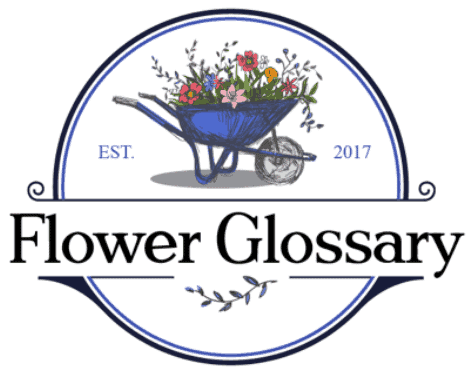Flower Glossary is reader-supported. When you buy through links on our site, we may earn an affiliate commission.
Flowers are a wonderful way to brighten a room or lift someone’s mood. Many varieties are colorful, fragrant, and beautiful. But there are certain occasions where you want something extra special. For those situations, nothing but exotic flowers will do.
If you’re looking to add some exotic blooms to your life, below you’ll find some of our favorites.
Table of Contents
Amaranth
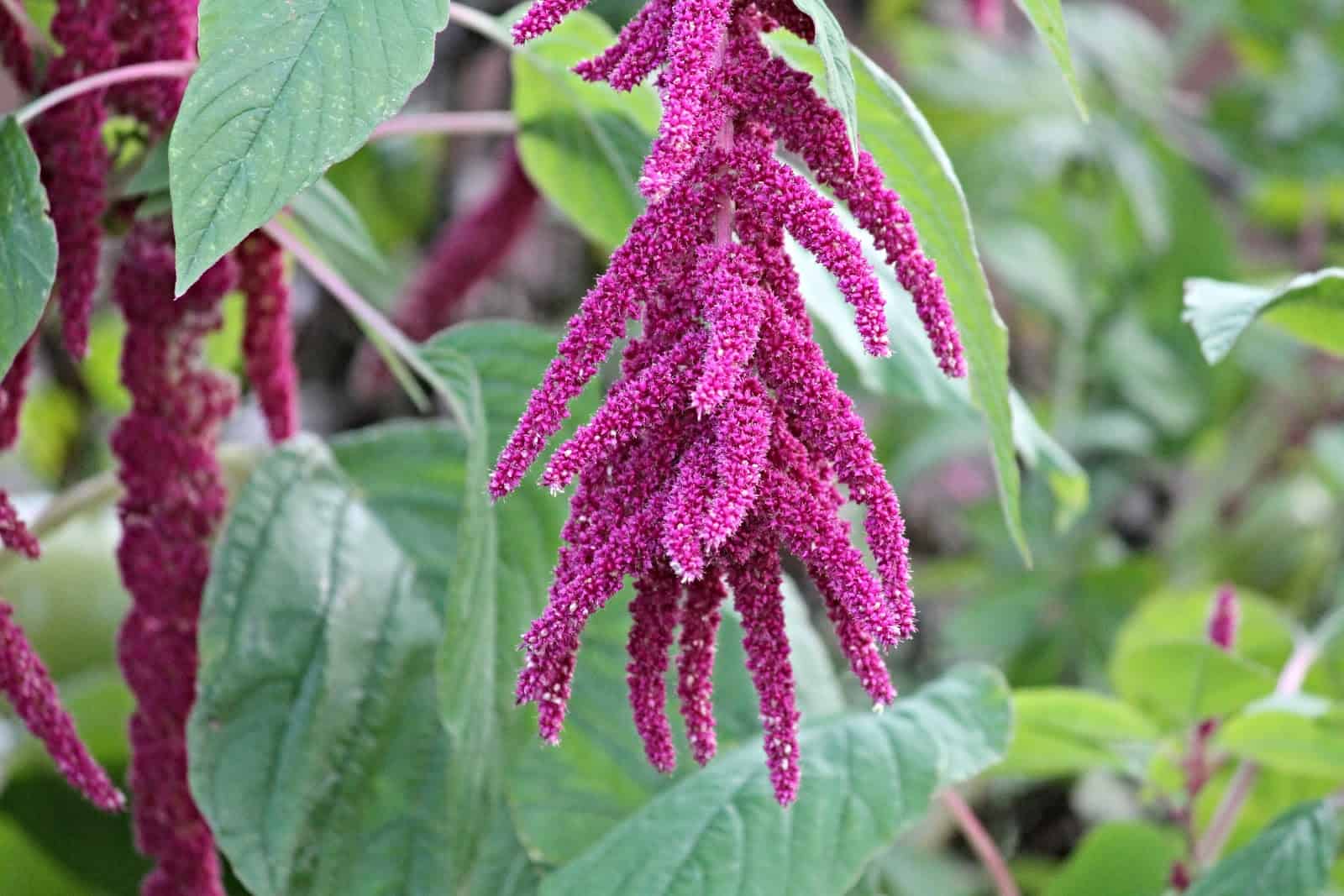
Amaranth are exotic plants that bring a burst of color to flower beds and arrangements alike. These beautiful accent plants are often used in dried flower arrangements as they lend themselves well to the drying process. The flowers form in long, rope-like strands that dangle from tall stems.
They are typically seen in dark reds and purples or even pink, though some varieties bloom in green or orange. If you’re looking for a showy bloom to bring a touch of drama to your floral display, amaranth is hard to beat. The word itself means “unfading” in Greek, and amaranth flowers have come to symbolize immortality or eternity, especially when describing love for the recipient.
Amaryllis (Hippeastrum)
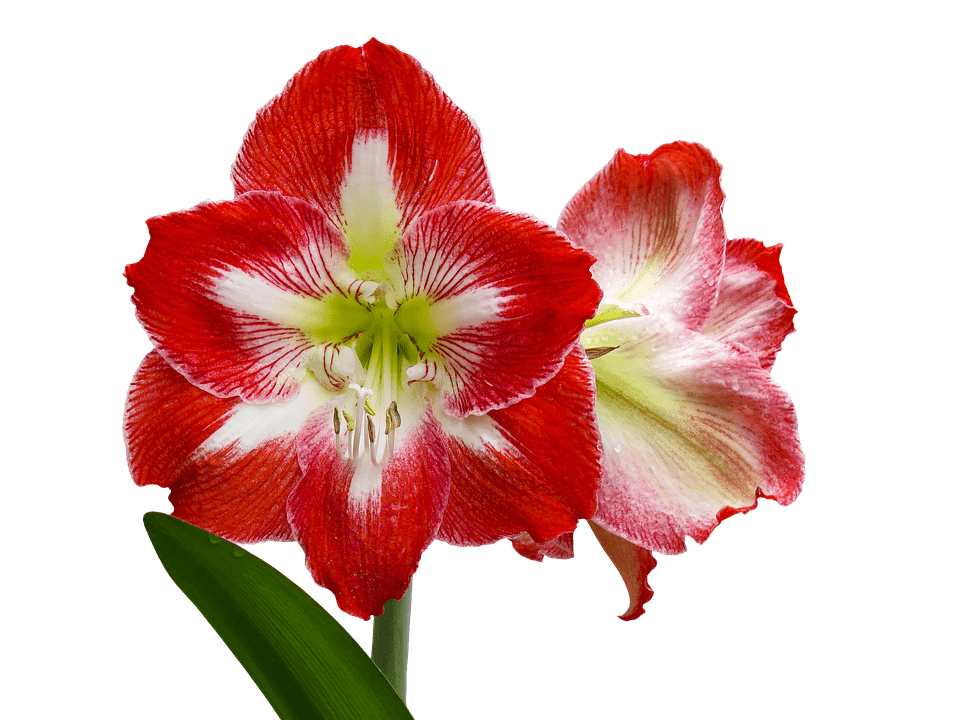
Amaryllis flowers are grown from bulbs and are often grown in the tropical regions of South America. Compared to other bulbs, they are exceptionally easy to grow and will bloom for up to six weeks. Their lily-like blooms come in a variety of showy color combinations, from soft creams and delicate pinks to brilliant reds and even a blue or almost black.
Some varieties feature star-shaped or trumpet-shaped flowers, and some can grow up to six inches in diameter. These beautiful flowers are a favorite for gardeners and florists alike. In Victorian times, the amaryllis was used to symbolize a strong, prideful woman—a true compliment in its day. Today, you may see red and white varieties sold in December as a popular alternative to poinsettias.
Anthurium
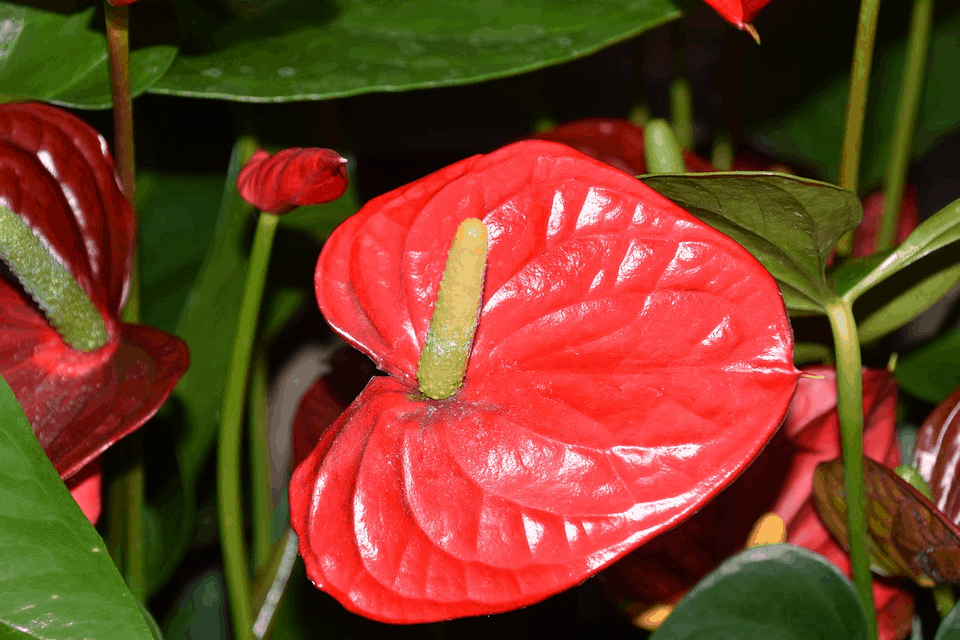
The anthurium is known for its waxy, heart-shaped blooms. These can be found in shades ranging from white or green through pink and red. What we call flowers are actually a type of bract. Each stem features a long rod-shaped protrusion that contains the actual flowers, which are tiny and far less showy. Over time, anthuriums have come to symbolize hospitality or abundance.
Banana Flowers (Musa)

We generally think of banana trees as producing delicious fruit for us to enjoy, but they also feature some gorgeous flowers. The blooms grow on the end of the stem holding the banana fruit, and are also edible flowers. Typically, the blooms are steamed and sliced or eaten raw. They may also be used in stews or curries, and some fans claim they taste a lot like artichokes.
Banana blossoms are teardrop-shaped and feature fleshy petals, often in colors of crimson or shades of purple. The color gets paler as you peel off petals, so for display, they’re often peeled back to their lighter, more delicate centers. In Hindu thought, they symbolize prosperity and femininity, while in Buddhism banana trees symbolize the fragility of life.
Bindweed (Convolvulus Arvensis)
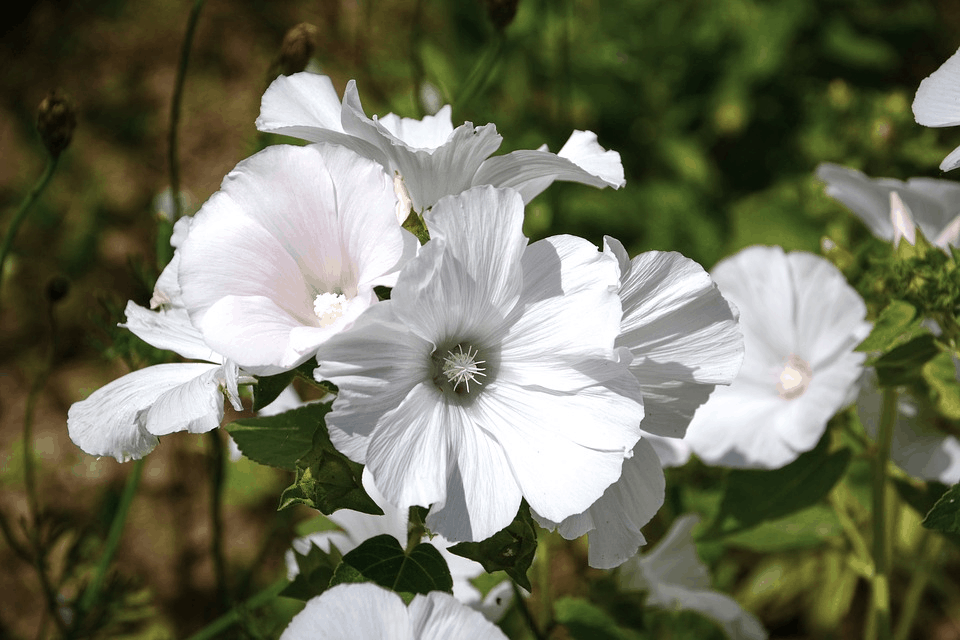
The bindweed flower may not sound appealing, but these ruffled white blooms are actually quite graceful. They’re often used in garlands or presented in small bundles. When given as a gift, the bindweed flower symbolizes family or fertility. In some cultures, they are commonly used as gifts to parents or grandparents as a token of appreciation.
While once treated as a pest in the garden, these blossoms have come into their own. Today, in addition to harvesting their blossoms for their beauty, the bindweed can be made into a medicinal tea and their vines are tough enough to be used as a natural twine in floral arrangements.
Birds of Paradise (Strelitzia Reginae)
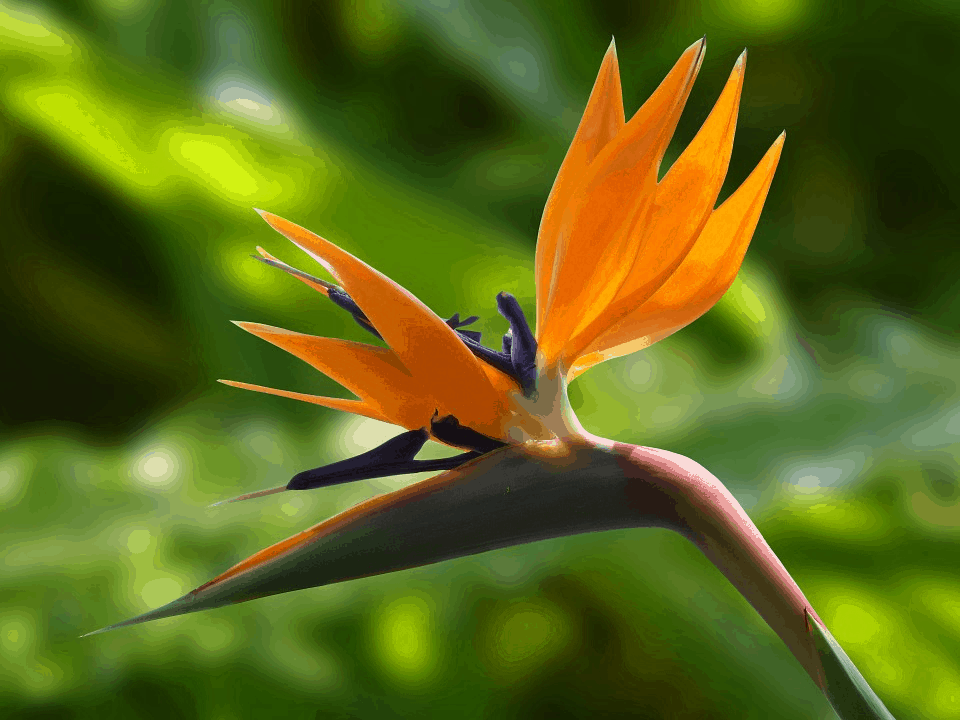
Possibly the ultimate exotic flower, it’s hard to overstate the allure and beauty of birds of paradise. These spiky, orange and blue blossoms look a lot like a brightly-colored tropical bird. Originally from South Africa, you may also hear them called crane flowers. As a gift, birds of paradise impart the meaning of joyfulness, anticipation, or excitement.
They are also the official flower for ninth wedding anniversary celebrations. But due to their poisonous nature, be sure to keep them away from pets as they are toxic to both cats and dogs.
Bull Thistle (Cirsium Vulgare)

The bull thistle, or spear thistle, is a tough, hardy plant and its blooms are no different. Native throughout most of Europe and Western Asia, these plants are the national flower of Scotland, and often used as a representation of Scottish culture and pride. They are classified as both a flower and a weed.
The blooms form in teardrop shapes with a cluster of pink or purple tubular flowers bursting from the top. They’re prized not only for their tough yet delicate appearance but also can be cooked or served raw in salads. Medicine made from the soaked leaves and roots has been traditionally used to relieve nervous disorders and even seizures.
Calathea
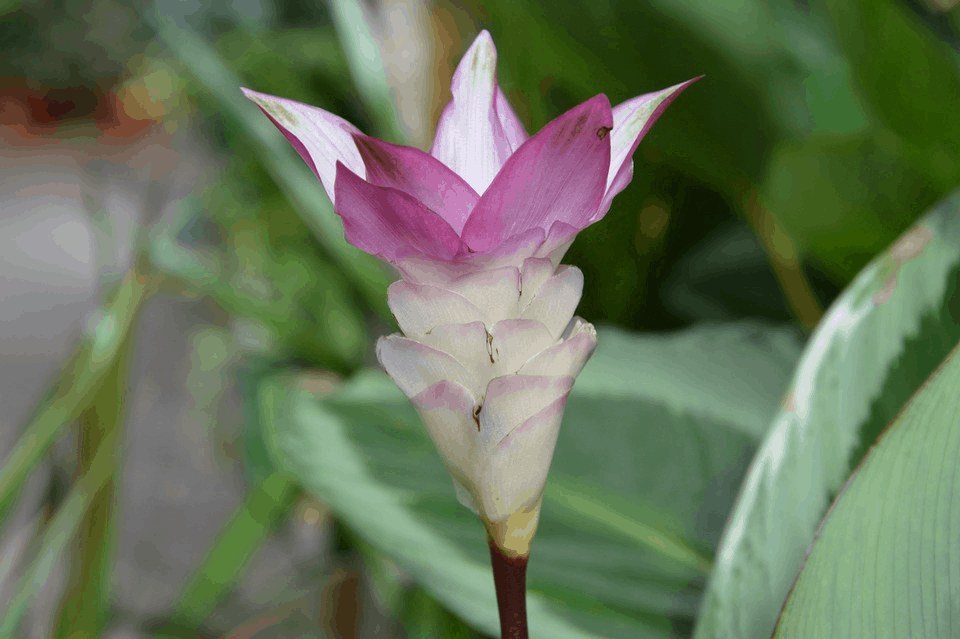
Calatheas are often given as houseplants due to their broad, showy green leaves. These leaves are most often striped, but can also feature flame patterns or colored edging. They open wide in the sunlight, but then softly close again at night. The calathea is used to symbolize new beginnings, and they’re a wonderful housewarming gift.
It’s even thought that this plant may be where the phrase “turn over a new leaf” came from, referring to the way they open and close. They are also sometimes called prayer plants as the leaves look a bit like hands folded in prayer when they close at night.
In addition to these spectacular leaves, the calathea also produces delicate tropical blooms. The flowers tend to be either blue and white or purple and white, and form in varying shapes from a rounded beehive to the shape of a rattlesnake tail.
Calla Lily

One of the most popular and common exotics is the calla lily. These unusual blooms are a popular choice for weddings. They are often seen in ivory with green leaves, but mini callas can be found in almost any color of the rainbow. Calla lilies aren’t actually lilies, but more closely related to the philodendron. The waxy flowers bloom in a cup or trumpet shape with a yellow spadix rising from the center.
Over the centuries, these flowers have been highly prized and have taken on many meanings. Today they’re often used to symbolize purity, youth, faith, or rebirth. They are often associated with the Christian Easter service as a symbol of the resurrection. Calla lilies are traditionally the flower of the sixth wedding anniversary.
Caraway (Carum Carvi)
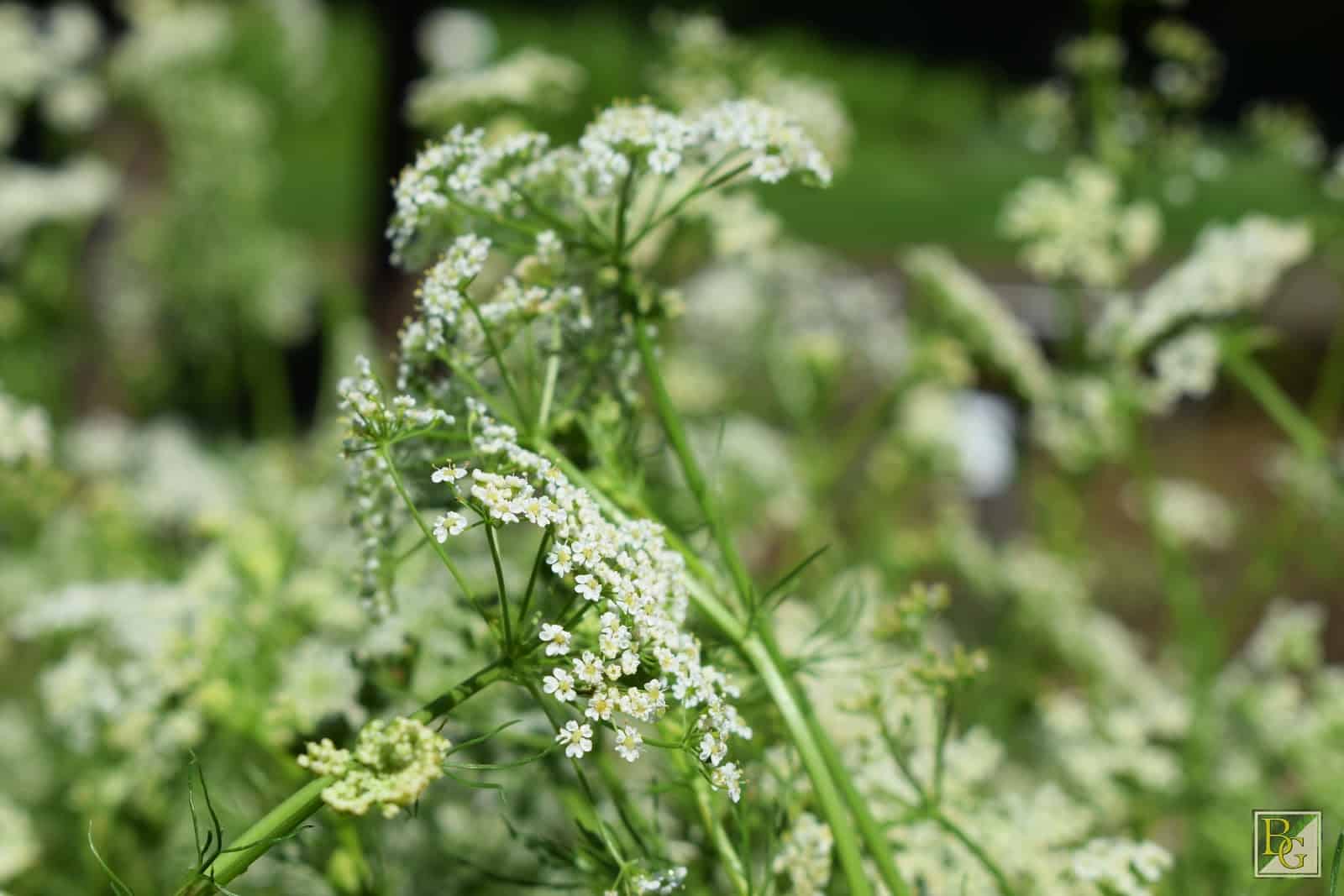
[Image courtesy of Botanik Guide]
Caraway flowers are delicate white blossoms that grow in clusters. These blooms are gaining popularity in bouquets as a dainty way to offset larger blooms. The plant has long been cultivated for its fruit (often called caraway seeds) which is dried and used as a spice.
In the middle ages, and through the Elizabethan era, legend said that caraway flowers could prevent infidelity. For this reason, caraway seeds were commonly used in love potions and tinctures. Women commonly hid caraway flowers or seeds in their husbands’ pockets, believing that this would keep them from wandering. Today, these flowers retain the symbolism of infidelity prevented.
Ecuador Roses
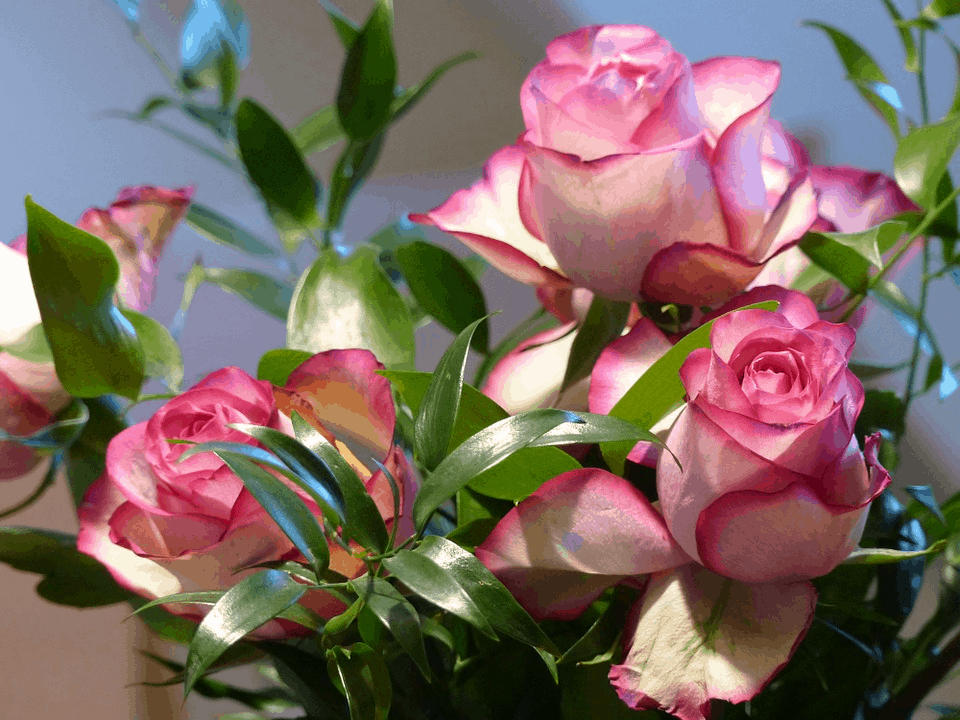
It’s no secret that roses have always been a favorite for arrangements and gifts. Today, roses from the country of Ecuador are often considered to be the highest in quality. This relatively small country, only about the size of the state of Colorado, is the third largest supplier of cut flowers in the world. And roses are one of their most popular blooms.
This is an even more amazing feat when you consider that the country’s flower exporting only really began in the 1990s. One of the reasons Ecuador roses are so prized is because of their size. Unlike many other countries’ blooms, these South American rose stems can grow to be over five feet tall. Their unique growing conditions also lead to a longer-lasting bloom.
Fiddleneck (Amsinckia Lycopsoides)
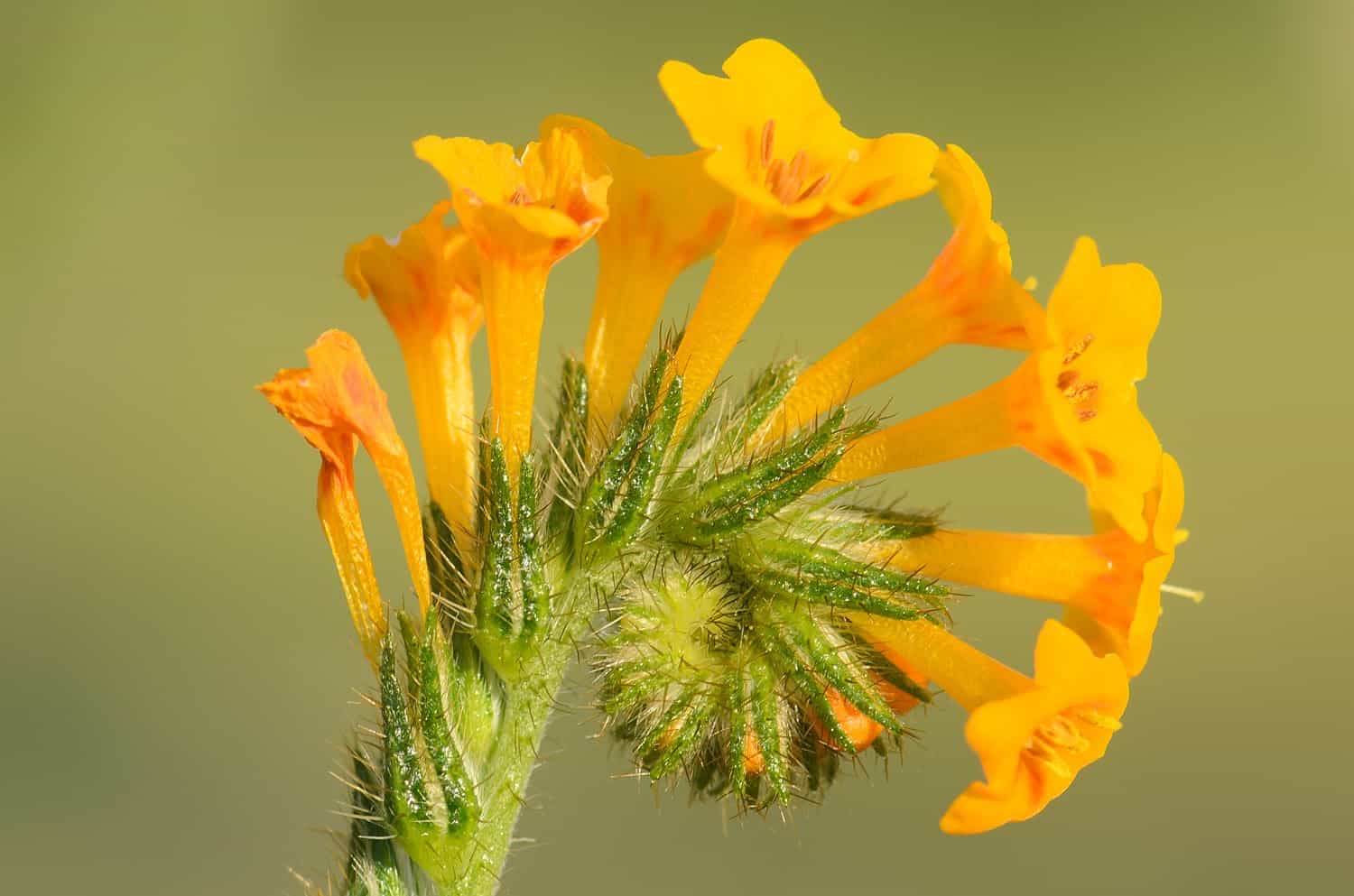
[Image courtesy of Marshal Hedin on Flickr]
Amsinckia, or fiddlenecks, are beautiful flowering plants with a unique shape. Each stem produces a series of trumpet-shaped blooms and curls over at the top, in a way that reminds many of the neck of a fiddle. Most often the flowers are yellow or slightly orange with red in the center, but a few varieties are pale violet or nearly white in color.
These American wildflowers are sometimes considered a weed, and the hairs on the plant’s leaves can cause a rash in some individuals, but the delicate flowers are beautiful. In the garden, they tend to attract birds like the Lawrence’s goldfinch and beneficial insects such as bees and butterflies.
Filaree (Erodium Cicutarium)

Filaree, or more commonly known as redstem filaree or common stork’s bill is another annual we’re adding to our list of exotic flowers. This vibrant pink flower was originally found near Portugal and it wasn’t until the 18th century that it started sprouting in North America. Since then, the filaree can now be found in the deserts and other grassland areas of the southwest.
A few notable facts surrounding the filaree include: This flower is a hairy and somewhat sticky annual. Plus, the filaree uses a unique behavior to disperse their seeds to help grow more flowers. An explosive dispersal is used to launch the seeds to move more filaree across their best-suited planting areas. The flowers do this by storing elastic energy to launch seeds when it becomes appropriate.
Gardenia
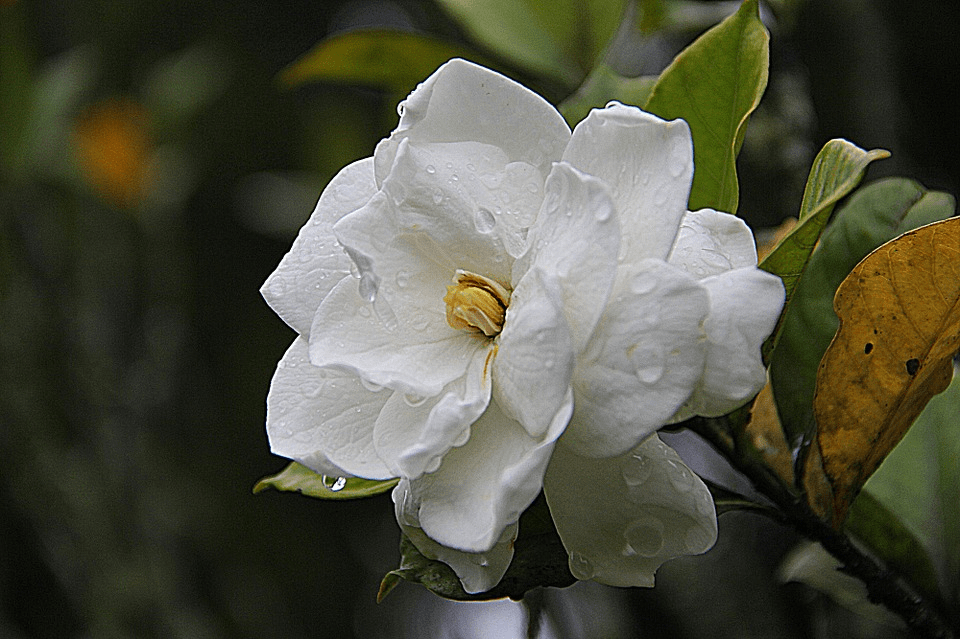
Gardenias are one of the more commonly spotted types of exotic flowers in home gardens, though they are native to tropical and subtropical regions of Africa and Asia. Interestingly, the gardenia actually belongs to the coffee family, Rubiaceae. It forms in evergreen shrubs and small trees, which can grow to a whopping 49 feet tall.
The leaves are broad and shaded in glossy dark green. The flowers can either be solitary or clustered, in either white or a pale yellow. Each flower is tubular with 5-12 petals that spread to nearly 5 inches. Gardenias blossom in mid-spring to mid-summer, and are often heavily and delightfully scented.
Ginger

Ginger may conjure an image of the root commonly used in cooking, but edible ginger is only one type of ginger out of 1,300 species in the Zingiberaceae family. Gingers are incredibly beautiful exotic pink flowers that are indigenous to India’s south west coast and Kerala’s Malabar coast.
Gingers are still an herb, and their oils are used for medicinal purposes, such as cardiovascular treatments and colds. Their oils are also used in perfumes. If you decide to grow gingers in your garden, make sure to choose plants with roots that already have buds and place them in a spot that gets a lot of sunlight.
Heliconia

Heliconia are also known as lobster claw plants, parrot flower, or false birds-of-paradise. They feature bright red, orange, green, and yellow bracts that cluster along the stem. It’s native to Central and South America, so it can grow well in lower regions of the USA (zones 10-13). They’re an herbaceous plant that can grow as tall as 15 feet. Their stems are long, and their flowers are drooping panicles with waxy bracts. Their shape limits their pollination and only certain subsets of hummingbirds can access their pollen.
Horseweed (Erigeron Canadensis)

Horseweed (Erigeron Canadensis) is native to Central and North America. It features hairy stems and unstalked leaves that are narrow and long. These leaves alternate up the stem in a spiral. Their flowers are small but form in dense clusters.
Each little flower has a ring of white or light purple which surrounds yellow disc-like florets. They grow well in full sun and dry conditions, meaning they’re well resistant to drought. Although these flowers can grow like a weed they aren’t completely invasive.
Hyacinth
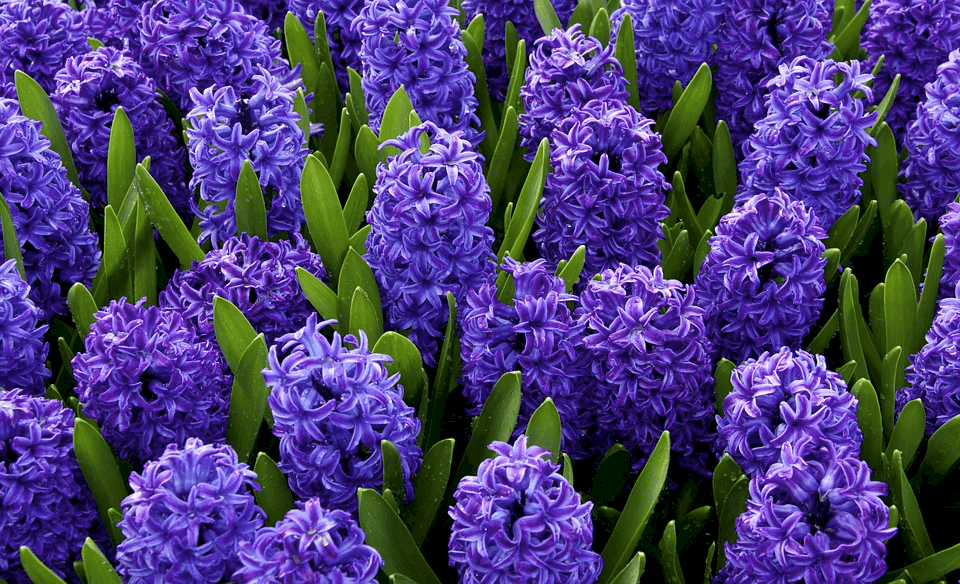
Hyacinths are well-known exotic flowers, and are commonly grown in most domestic gardens. This is because they’re incredibly beautiful and exceptionally fragrant. They’re native to the Mediterranean and parts of northern Palestine.
These flowers feature clusters of colorful, bursting blooms along a sturdy stalk. They grow from bulbs to form flower spikes with four to six petals and come in colors such as red, blue, orange, white, yellow, pink, and purple. They were extremely popular in the 18th century, and as a result, the Dutch notably grew over 2,000 cultivars.
Lilac
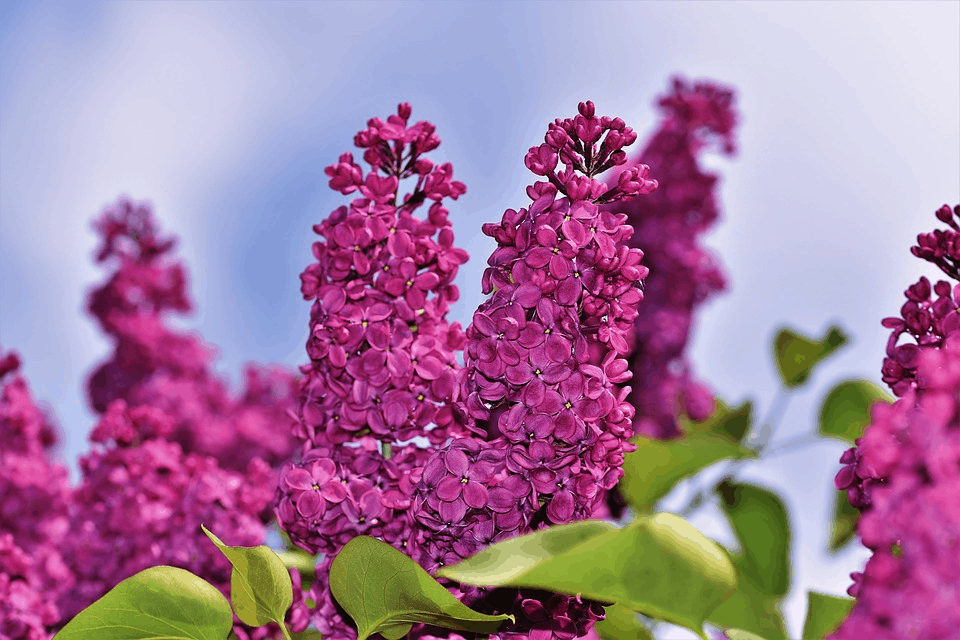
Lilac is native to the Balkan Peninsula, and actually belongs to the olive family, Oleaceae. It naturally grows on rocky hills as shrubs or small trees, but it’s now commonly grown in home gardens. They’re often used as border plants and can even be mixed into loose hedges, but some varieties are small enough to use for foundational planting. Their bark is grey and their stems are smooth.
The lilac’s leaves are light green and oval, while their flowers are tubular and usually come in colors of lilac, blue, and sometimes white. They are quite prone to mildew disease so they must have really good circulation and regular pruning.
Lily of the Valley
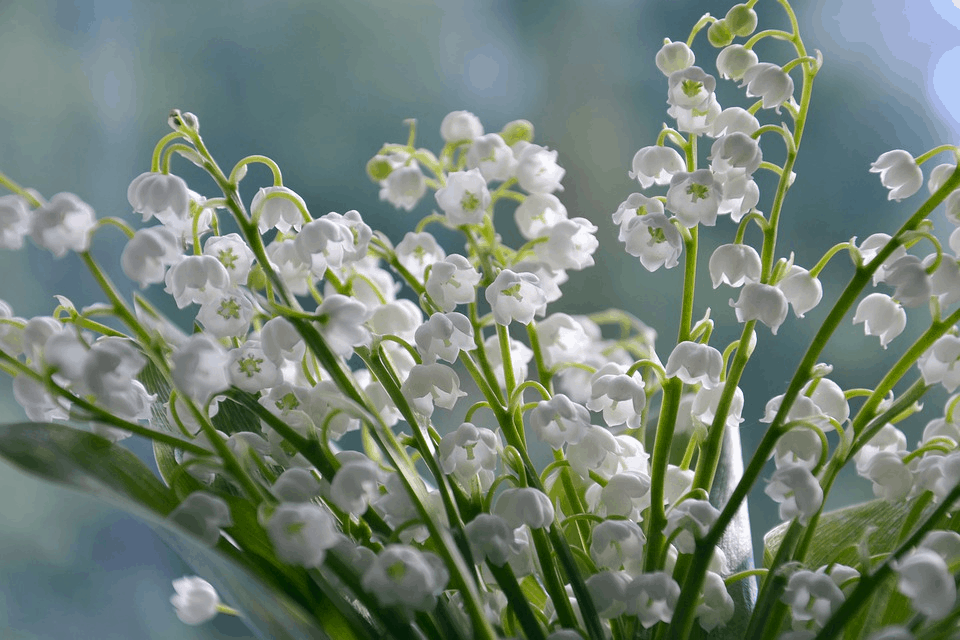
Lily of the Valley has many names, including May Bells, Our Lady’s Tears, and Mary’s Tears. In the early days of cultivation in England, Lily of the Valley was called glovewort since it was used to create a sore hand salve (or wort). They’re a woodland flowering plant that has a delicate scent with bell-shaped white flowers.
It’s native to Northern Asia and Europe. It can create extensive colonies due to their rhizomes, or underground stems. Each flowering stem has two leaves and up to fifteen flowers. Each of these flowers have around six petals, usually white but sometimes pink. They flower late in the spring, though it could be earlier in the Northern Hemisphere.
Lotus
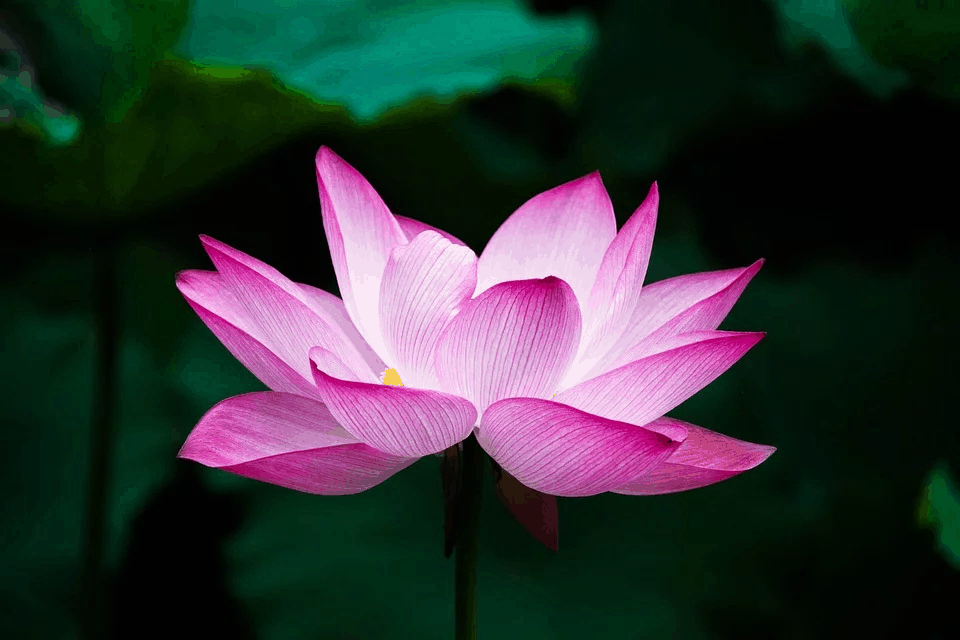
The Lotus flower, or water lily, is one of the most beautiful exotic flowers and is prominently featured across several religions. One of the most interesting things about the lotus, beyond its beauty, is that its seeds can survive for hundreds of years. The oldest germination of lotus seeds is 1,300 years old after the seeds were found in a dry lakebed in China.
Lotuses are native to China, India, East Asia, and Russia, as well as some parts of the Caspian Sea. These flowers can grow in altitudes up to 4,600 feet, but they need swampy water to survive and thrive best in muddy waters where it’s easy for them to bury their long roots.
Melaleuca
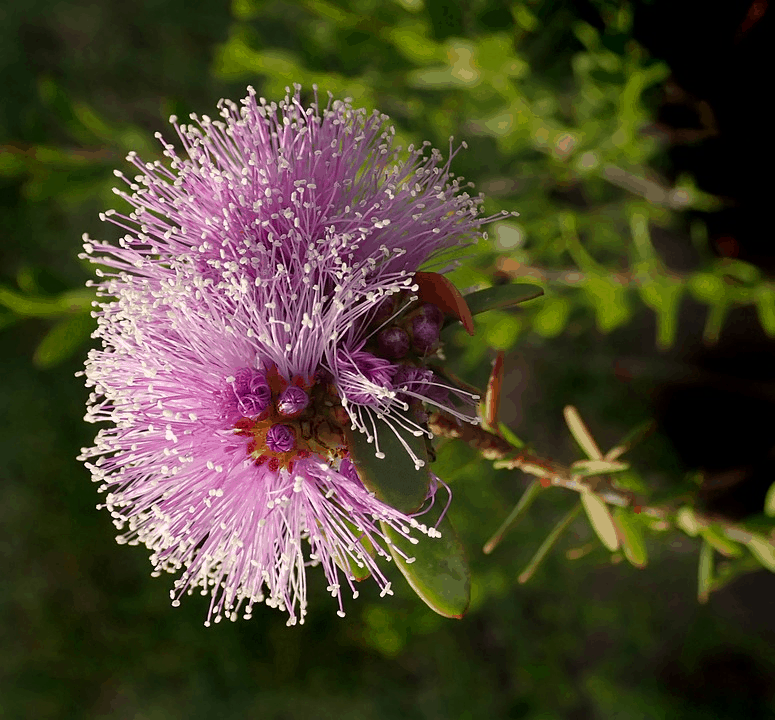
Melaleuca is also called paperbarks, honey-myrtles, or tea trees. It belongs to the myrtle family and ranges in size from small shrubs to full-blown trees growing up to 115 feet tall. Their flowers cluster in groups with spikes that look like a bush.
While they’re commonly grown for their tea-tree oil, they’re also grown in home gardens for their impressive and unique blossoms. They’re well adapted to swamps, bogs, sandy soils, and along the edges of saltpans. Many varieties are threatened by the clearing of swamps, as well as myrtle rust, while others are thriving and continue to bloom in several areas.
Orchid

Orchids are an impressively diverse family of exotic flowers. Since the 19th century, cultivators have produced more than 100,000 hybrids and cultivars of orchids. They’re distinguishable from other plants due to their small seeds, fused stamens, and long stems that bloom from a single bud.
The blooms grow to a certain size and are then replaced with new growths. They require a lot of warmth and humidity to survive, which is why many home growers keep them in their bathrooms.
Oriental Lily
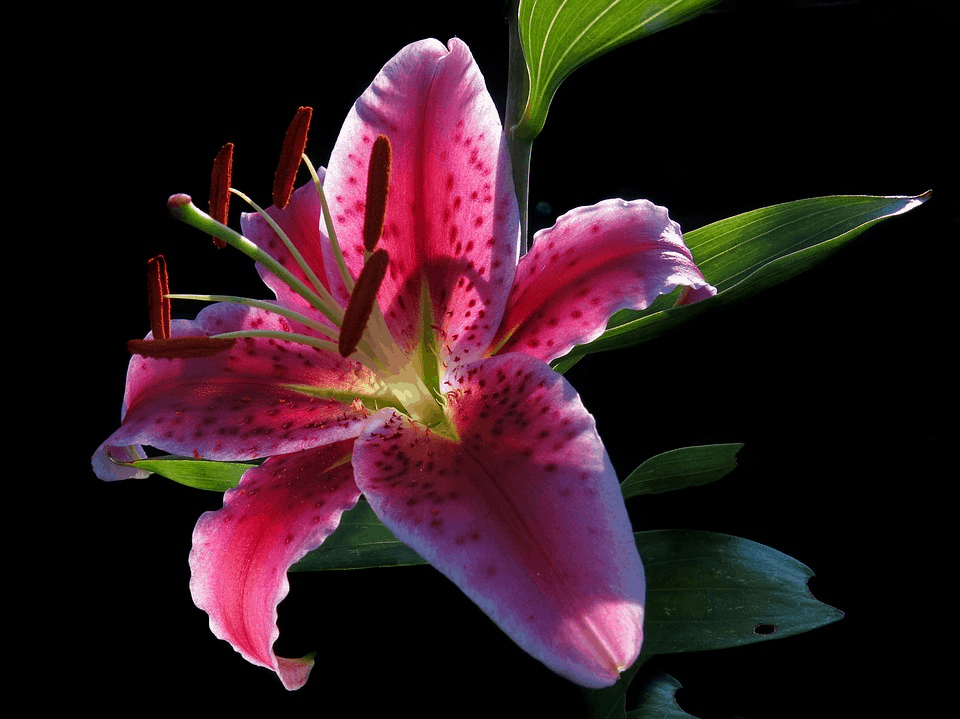
The Oriental lily, also known as stargazer, is a hybrid lily with an exceptional fragrance. They’re popular because of that smell and also because they are easy to grow in full sunlight and well-drained soil. They can grow up to 3 feet tall and spread up to 14 inches wide.
Typical lily flowers face towards the ground, but the stargazer flowers are unique since they face towards the sky. There are few that don’t enjoy the fragrance of these flowers and can even develop symptoms like headaches and nausea when exposed to the scent. Even worse, there are some people that experience breathing issues from the smell. However, for most growers, the smell and beauty of the Oriental lily can’t be passed up.
Plumeria
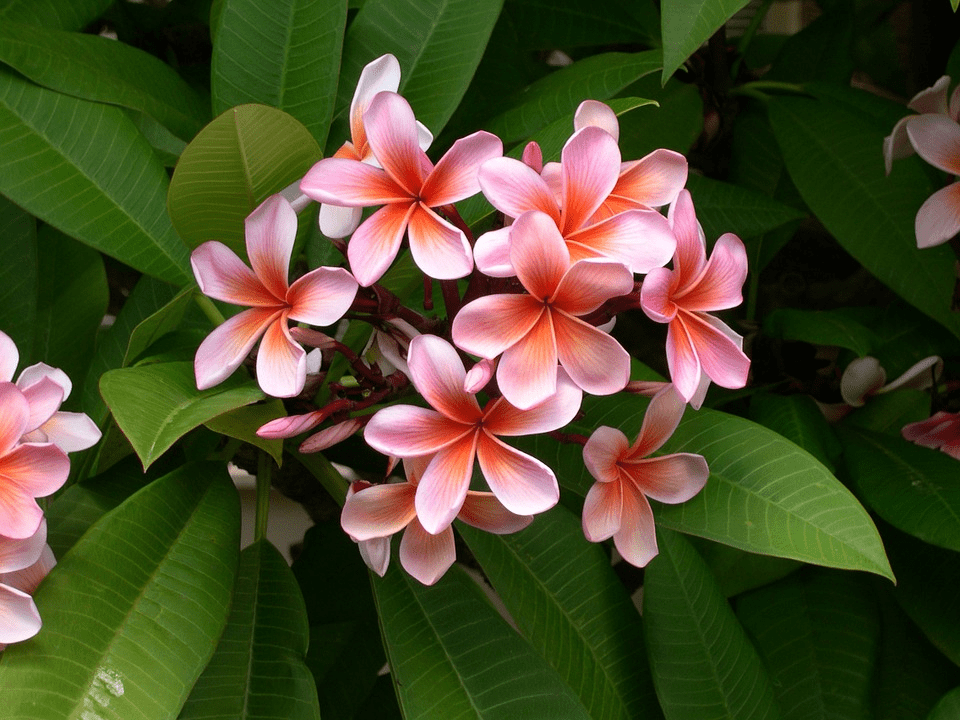
Plumeria flowers are endemic to warmer regions such as Mexico, the Caribbean, and Central America. They grow as shrubs or small trees and have a delightful fragrance during the night. Though there is no nectar, their smell tricks moths into pollinating them.
The moths jump from plant to plant with their pollen as they search for nectar. In Southeast Asia, the plumeria is a sacred flower with distinct long petals that plume out from a small center. To thrive in your garden they should be deeply watered but allowed to fully dry out before watering again.
Seaside Mahoe (Thespesia Populnea)
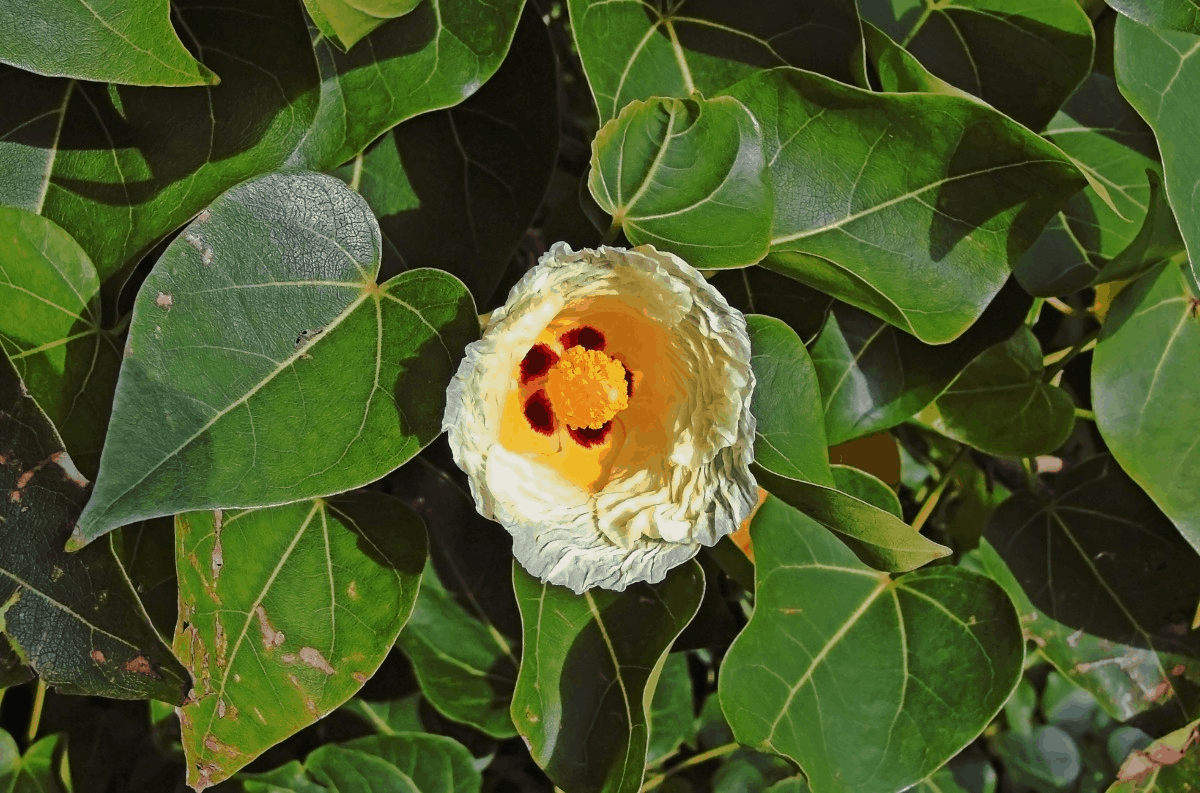
Seaside mahoe has several names such as portia tree, Pacific rosewood, Indian tulip tree, and milo. It belongs to the mallow family and grows as a small shrub or tree most commonly seen on the coasts. Though botanists don’t know the true origins of seaside mahoe, they believe it’s native to the Old World Tropics and adapted for sea dispersal.
These plants can survive for months, floating on the currents of the sea. Seaside mahoe trees reach heights of 33 feet, with trunks nearly 12 inches wide. It can grow in a variety of soil types such as sand, limestone, and basalt that appear along most coasts.
Spotted Knapweed (Centaurea Maculosa)

Spotted knapweed is a short-lived perennial with pink flowers featuring deeply lobed leaves. It gets its name from the black tips or spots on the sepals. They have achene fruit with a stubby pappus. It’s commonly found along the banks of streams, in sand prairies, old pastures, along the shorelines of ponds, and even along railroads. For that reason, it’s considered a highly invasive plant.
Once it’s established, it continues to grow and spread throughout the available land. Because these plants are “quick drinkers”, these flowers will soak up any available water much faster, starving other plants that may be around.
St. John’s Wort (Hypericum Perforatum)
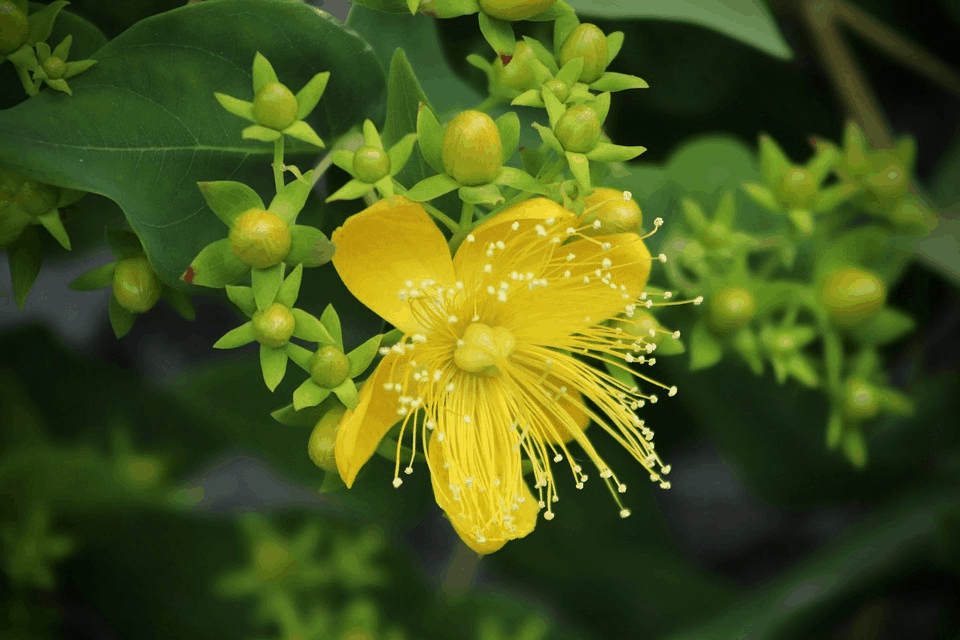
St. John’s wort is common in the gardens of those who grow for medicinal purposes, but it also produces incredibly beautiful exotic flowers. It’s a herbaceous perennial with creeping rhizomes, reddish stems that get rather woody near their base, clustered branches, and delicate bright yellow flowers.
These flowers each have five petals with black dots spread across their surface. Although it’s effectiveness as medicine has little evidence, these plants are poisonous to livestock so do consider this before planting.
Tulips
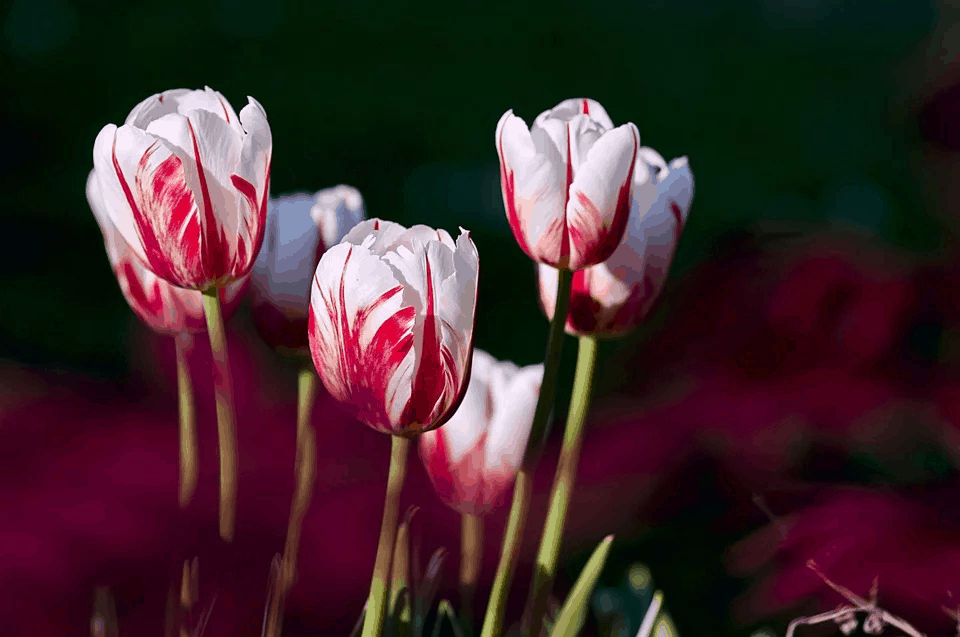
Tulips are an herbaceous perennial that use their bulbs as storage organs. Their flowers are large, showy, and often bloom in very bright colors such as pink, yellow, white, or shades of red. Sometimes there is a different color at the base of the flower that plumes up into the petal in streaks.
Tulips are a part of the lily family. They were originally found in Europe and central Asia, where they grew wild in the Tien Shan Mountains. Cultivation in Istanbul began in 1055 and was so popular it became the symbol of the Ottomans.
However, it’s possible that Tulips were cultivated in Persia even earlier than this, but the mania for tulips didn’t occur until the 16th century. By then, they became widely associated with the Netherlands, since many of the Dutch Golden Age paintings depicted the flowers. Today there are thousands of cultivars and hybrids that can be found all across the globe.
Interested in growing exotic flowering plants in your garden? Flower Glossary is your source for information on how to grow and care for a variety of plants, flowers, shrubs, and trees. Want to give tropical flowers as a gift? Check out Exotic Flowers on Teleflora.
